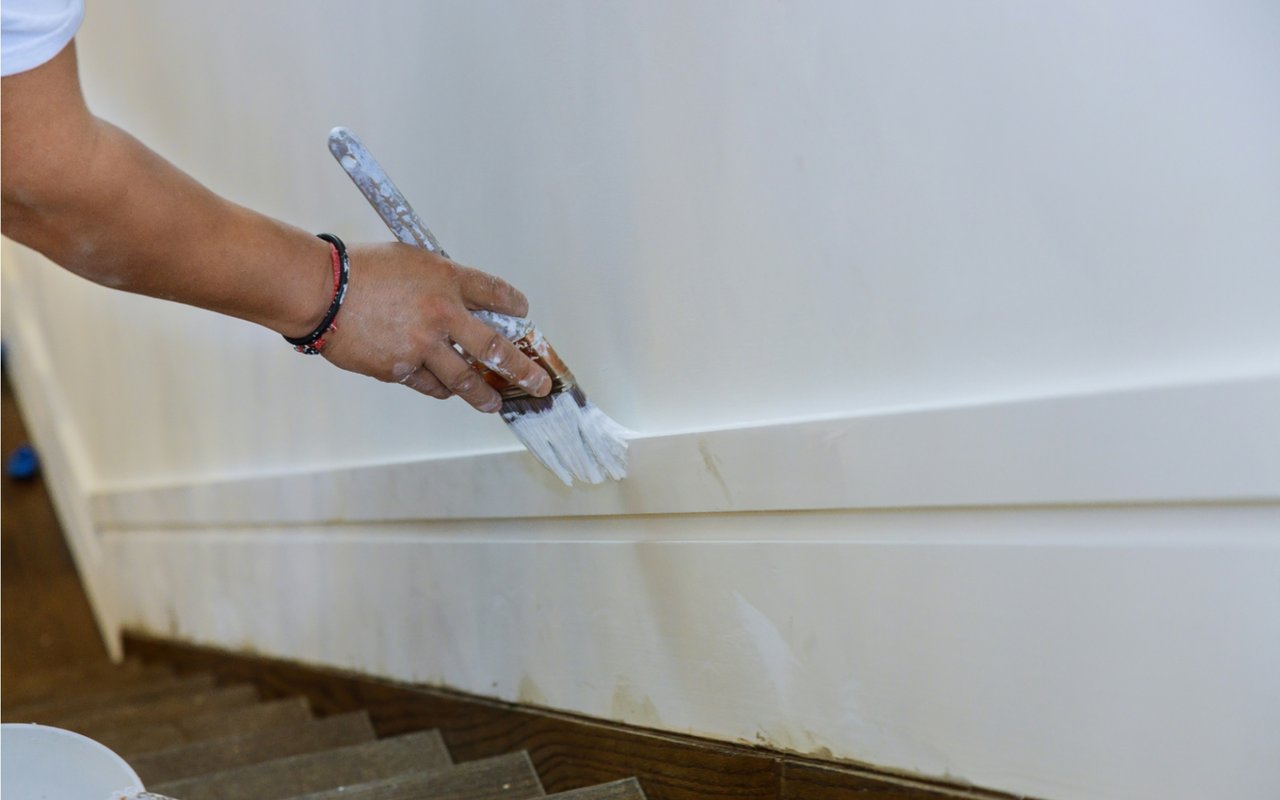As environmental consciousness grows among homeowners, the focus on sustainable living has shifted from a trend to a long-term lifestyle choice. Making your home more eco-friendly not only helps reduce your carbon footprint but also lowers energy costs, improves indoor air quality, and increases overall property value. Whether you're planning a full renovation or looking for simple upgrades, integrating sustainable practices can make a meaningful difference. The Hidy Homes Team works closely with clients who prioritize energy efficiency and environmental stewardship, often recommending eco-conscious enhancements that align with both aesthetic and practical goals. This guide highlights sustainable home improvement tips and eco-friendly home upgrades that can transform any home into a greener, smarter space.
Start With an Energy Audit to Identify Priorities
Before making changes, it’s wise to assess where your home currently stands in terms of energy use and efficiency. Many utility companies offer free or low-cost energy audits that evaluate insulation, HVAC performance, window sealing, lighting, and appliance efficiency. This audit helps pinpoint where energy is being wasted and provides a data-driven foundation for choosing the most impactful eco-friendly home upgrades.
For most homeowners, heating and cooling account for the majority of energy consumption. Upgrading insulation, sealing air leaks, and improving ventilation are often the most immediate ways to reduce environmental impact and utility bills. Sustainable home improvement tips begin with understanding where your home uses the most energy and targeting those areas first for change.
For most homeowners, heating and cooling account for the majority of energy consumption. Upgrading insulation, sealing air leaks, and improving ventilation are often the most immediate ways to reduce environmental impact and utility bills. Sustainable home improvement tips begin with understanding where your home uses the most energy and targeting those areas first for change.
Upgrade to High-Efficiency Windows and Doors
Replacing outdated windows and doors with energy-efficient alternatives is one of the most effective ways to improve thermal performance and reduce drafts. Double- or triple-pane windows with low-E coatings minimize heat transfer and maintain consistent indoor temperatures year-round. Properly insulated doors, especially those with energy performance ratings, also help stabilize your indoor environment.
Additionally, choosing window frames made of sustainable materials such as recycled aluminum or composite wood contributes to long-term sustainability. For those not ready to replace windows entirely, adding thermal curtains or weather stripping is a low-cost, short-term upgrade that aligns with eco-friendly goals.
Additionally, choosing window frames made of sustainable materials such as recycled aluminum or composite wood contributes to long-term sustainability. For those not ready to replace windows entirely, adding thermal curtains or weather stripping is a low-cost, short-term upgrade that aligns with eco-friendly goals.
Install Smart Home Systems for Energy Management
Smart thermostats, lighting controls, and energy-monitoring devices are increasingly popular components of eco-friendly home upgrades. These systems allow homeowners to optimize energy use by automating heating, cooling, and lighting based on occupancy or time of day.
A smart thermostat, for example, can learn household patterns and adjust temperatures accordingly, ensuring energy isn’t wasted when no one is home. Similarly, motion-sensor lighting or programmable LED systems reduce unnecessary energy consumption. These upgrades are relatively easy to install and offer both immediate cost savings and a smaller environmental footprint.
As more homeowners seek intelligent automation, these technologies are becoming a standard part of sustainable home improvement tips—bridging convenience with conservation.
A smart thermostat, for example, can learn household patterns and adjust temperatures accordingly, ensuring energy isn’t wasted when no one is home. Similarly, motion-sensor lighting or programmable LED systems reduce unnecessary energy consumption. These upgrades are relatively easy to install and offer both immediate cost savings and a smaller environmental footprint.
As more homeowners seek intelligent automation, these technologies are becoming a standard part of sustainable home improvement tips—bridging convenience with conservation.
Choose Eco-Conscious Materials for Renovation Projects
When undertaking any renovation, the materials you choose can significantly influence the environmental impact of the project. Sustainable home improvement tips emphasize the importance of selecting renewable, recycled, or locally sourced products whenever possible.
Bamboo flooring, reclaimed wood, recycled metal, and low-VOC (volatile organic compound) paints are all excellent choices for reducing indoor toxins and promoting healthier living environments. These materials not only minimize emissions but also contribute to better air quality—an important factor for families with children or individuals with allergies.
Cabinetry, countertops, and tiles are now widely available in eco-friendly options that do not compromise on style. Investing in durable, high-quality materials also reduces the need for frequent replacements, which in turn minimizes waste over time.
Bamboo flooring, reclaimed wood, recycled metal, and low-VOC (volatile organic compound) paints are all excellent choices for reducing indoor toxins and promoting healthier living environments. These materials not only minimize emissions but also contribute to better air quality—an important factor for families with children or individuals with allergies.
Cabinetry, countertops, and tiles are now widely available in eco-friendly options that do not compromise on style. Investing in durable, high-quality materials also reduces the need for frequent replacements, which in turn minimizes waste over time.
Incorporate Water-Efficient Fixtures and Landscaping
Reducing water usage is a critical component of eco-friendly living. Installing low-flow faucets, showerheads, and dual-flush toilets can dramatically reduce household water consumption without sacrificing performance. These upgrades often qualify for utility rebates and are widely recognized as key eco-friendly home upgrades.
Outside, xeriscaping—landscaping that reduces or eliminates the need for irrigation—uses native plants, mulch, and efficient drip systems to conserve water while maintaining curb appeal. Rain barrels and permeable paving are other water-saving solutions that align with sustainable principles.
Making these water-related improvements enhances environmental responsibility and often contributes to a more manageable utility bill—an appealing feature for current homeowners and prospective buyers alike.
Outside, xeriscaping—landscaping that reduces or eliminates the need for irrigation—uses native plants, mulch, and efficient drip systems to conserve water while maintaining curb appeal. Rain barrels and permeable paving are other water-saving solutions that align with sustainable principles.
Making these water-related improvements enhances environmental responsibility and often contributes to a more manageable utility bill—an appealing feature for current homeowners and prospective buyers alike.
Embrace Renewable Energy with Solar Integration
Perhaps the most transformative eco-friendly home upgrade is the addition of solar panels. While the upfront cost can be substantial, tax credits and financing options make solar energy more accessible than ever. Solar power can significantly offset electricity usage, provide long-term cost savings, and increase home value.
For homeowners not ready to install rooftop panels, solar-powered lighting for pathways or outdoor areas offers an affordable and functional entry point into renewable energy use. Solar integration also sends a strong message about environmental commitment, aligning your property with future-forward values.
Sustainable home improvement tips often include suggestions for integrating solar features incrementally—starting with what fits your budget and scaling as your needs and priorities evolve.
For homeowners not ready to install rooftop panels, solar-powered lighting for pathways or outdoor areas offers an affordable and functional entry point into renewable energy use. Solar integration also sends a strong message about environmental commitment, aligning your property with future-forward values.
Sustainable home improvement tips often include suggestions for integrating solar features incrementally—starting with what fits your budget and scaling as your needs and priorities evolve.
Reduce Waste Through Smart Appliance Choices and Recycling
Appliances account for a significant portion of household energy consumption. Upgrading to ENERGY STAR-rated models for refrigerators, dishwashers, washers, and dryers helps reduce both electricity and water usage. These appliances are designed for efficiency and are often eligible for rebates or incentives.
Equally important is creating a home environment that supports waste reduction. Establishing a simple recycling system, composting food scraps, and minimizing single-use plastics can greatly reduce the amount of household waste sent to landfills.
Even small changes—such as using cloth napkins, glass storage containers, or eco-friendly cleaning supplies—can collectively make a big impact on sustainability. These practices reinforce the lifestyle commitment that accompanies most eco-friendly home upgrades.
Equally important is creating a home environment that supports waste reduction. Establishing a simple recycling system, composting food scraps, and minimizing single-use plastics can greatly reduce the amount of household waste sent to landfills.
Even small changes—such as using cloth napkins, glass storage containers, or eco-friendly cleaning supplies—can collectively make a big impact on sustainability. These practices reinforce the lifestyle commitment that accompanies most eco-friendly home upgrades.
Design with Natural Light and Ventilation in Mind
A well-designed eco-friendly home maximizes natural resources. Enhancing natural light not only reduces reliance on artificial lighting but also improves mood and wellness. Strategically placing mirrors, choosing light-reflective paint, and removing heavy window treatments are effective ways to brighten spaces without added electricity.
Similarly, cross-ventilation strategies—where windows and vents are placed to allow breezes to flow through the home—can reduce the need for mechanical cooling during temperate months. Ceiling fans and operable skylights further support this design approach.
Designing for passive solar gain—where a home naturally absorbs and retains warmth from the sun—can also reduce heating costs in cooler seasons. These architectural elements demonstrate how sustainable home improvement tips extend beyond products and into the planning and layout of a space.
Similarly, cross-ventilation strategies—where windows and vents are placed to allow breezes to flow through the home—can reduce the need for mechanical cooling during temperate months. Ceiling fans and operable skylights further support this design approach.
Designing for passive solar gain—where a home naturally absorbs and retains warmth from the sun—can also reduce heating costs in cooler seasons. These architectural elements demonstrate how sustainable home improvement tips extend beyond products and into the planning and layout of a space.
Foster Long-Term Sustainability Through Lifestyle Habits
Ultimately, eco-friendly living is not just about installations and upgrades—it’s about daily choices. Turning off lights when not in use, unplugging electronics, using programmable thermostats, and reducing consumption are all behavioral shifts that support a greener home.
Teaching sustainability to children and sharing these principles with guests fosters a collective mindset that values the environment. When home features and homeowner habits align, the result is a truly sustainable household.
As eco-conscious buyers become a growing segment of the real estate market, properties that reflect these values through both design and function are increasingly in demand. Making your home more eco-friendly today sets the foundation for long-term livability, efficiency, and market appeal.
Teaching sustainability to children and sharing these principles with guests fosters a collective mindset that values the environment. When home features and homeowner habits align, the result is a truly sustainable household.
As eco-conscious buyers become a growing segment of the real estate market, properties that reflect these values through both design and function are increasingly in demand. Making your home more eco-friendly today sets the foundation for long-term livability, efficiency, and market appeal.
Explore Eco-Friendly Home Upgrades With the Hidy Homes Team
Whether you’re preparing your home for sale or simply seeking to live more sustainably, eco-conscious improvements can have a lasting impact. Connect with the Hidy Homes Team to explore energy-efficient properties, learn more about sustainable home improvement tips, and discover how eco-friendly home upgrades can elevate your lifestyle and enhance your investment.
Other Recommended Reads:




